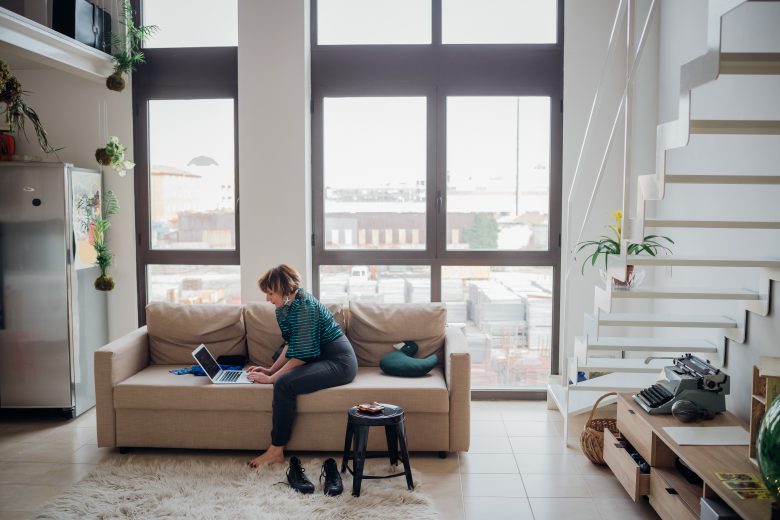Now that vaccination has been kicking off, especially in First World countries, it may be the time to start thinking about life after COVID-19. With the sudden outbreak way back in December 2019, the business process as we know it has transformed. From a micro perspective, just by looking at the gradual change in people’s lives gives us a hint that some changes that we have adapted to may remain permanent.
Will we return to working in the office?
During the surge of cases of COVID-19 in 2020, many were forced to stay at home and adapt to a remote setup of working. Being social creatures, work from home posed a hurdle for a few months as people tried to adapt to being productive in the comforts of their home. But, as a thriving society, in time, the people learned to adapt to working remotely.
Since work from home hasn’t been the norm in early 2020, the employees’ stress and productivity were questioned. Now that most of the workforce has seamlessly shifted to working remotely, are they ready to go back and traverse traffic just to go to the office?
In a Future Forum Research by the company Slack, the BBC highlighted that out of 4,700 knowledge workers, most of them choose a hybrid remote-office model over the typical office setting. With the hybrid remote-office model, workers efficiently managed their time, which led to an improved work-life balance. Having a work-life balance seemed far-fetched back in the regular office hours.
The hybrid remote-office model is beneficial in boosting flexibility and productivity in the workforce. Before the pandemic, the workers were driven to be productive by utilizing face-to-face interaction, collaborations, and building relationships but at the expense of a work-life balance. With the emergence of a hybrid remote-office model, employees can physically interact on certain days and continue work in their homes.
Moreover, with Work from Home, people realize the effects of having a quality life. Stressors such as bad working environment and commute reduced exponentially. Amidst all the benefits reiterated, work from home may be challenging to a few groups of people. Depending on which region or continent you are in, the household environment may differ. Geographical location may also impose hardships in connectivity.
Potentially, this kind of model may inflict complications on the companies. At the start of the pandemic and as the workforce shifted to working remotely, fixed costs were reduced for the companies. Once employees start returning to their offices, costs are expected to rise. An article by Forbes expressed companies’ worries once they start preparing employees’ return to the office.
One company they highlighted was Alphabet, the parent company of Google. Alphabet’s working environment is deemed to be a haven for the employees. The design of their structure encourages a work-life balance for their employees. The company is currently in the process of creating a corporate campus-like working environment whereby bicycle paths, parks, restaurants, and other amenities will be developed in the Google complex. They expressed that they may face hurdles in 2021 as they try to prepare a safe return for their employees, and simultaneously develop experiments on hybrid work models.
Businesses that thrive alongside WFH
With the emergence of remote working, some businesses fell and filed for bankruptcy. But, some also thrived as they cater to the needs of those who are working from home. Delivery services – particularly the Online Food Delivery Service – have continuously dominated and became a billion-dollar industry. In the mid-2000s, we saw the rise of delivery service platforms that presented various restaurants to choose from. Even with the steady growth, some restaurants remained adamant in partnering with these delivery platforms. Then COVID-19 came, the food industry was greatly affected, and the delivery service industry’s growth exponentially increased.
Now, every restaurant is signed up with an online delivery platform. Some restaurants only operate online. Cloud kitchens also sprung as food delivery became systematic and online. Once indoor dining has been restricted across the globe, these delivery service companies became powerhouses. After the pandemic, this industry will continue to thrive. However, as society starts to return to public spaces, what effect could it impose on this industry?
As we slowly return to a pre-pandemic world, many industries will be affected once more. A great component of the economy is the workforce. With many nations rushing to bounce from the pandemic’s adverse effects on their economy, It is only time to tell if the hybrid remote-office model will be the future of the workforce.












Pingback: How to Create Your Ideal Work From Home Setup - Amazon FBA Courses
Pingback: How to make your business greener - StartUp Mindset
Pingback: The Future of Work from Home after Pandemic – Entrepreneur – Start, Run and Grow Your Business